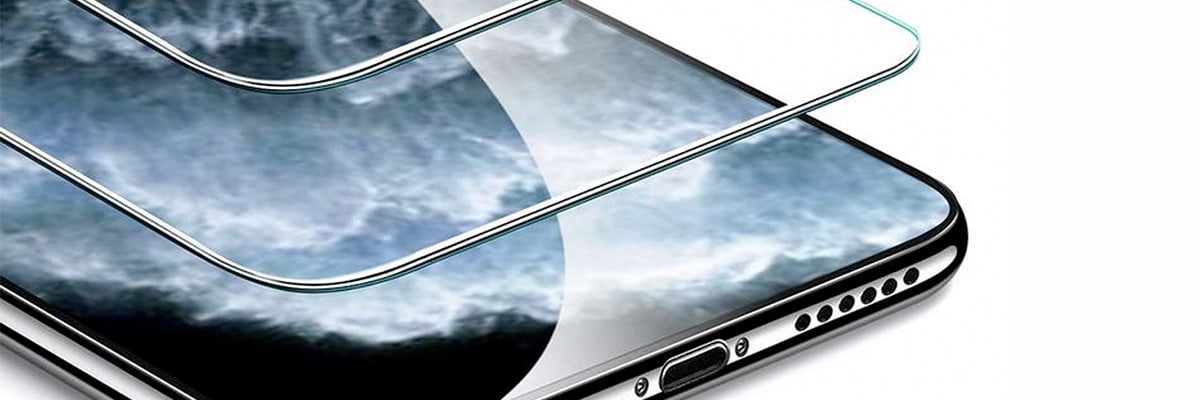
Return navigate_next
Top Screen Protectors to Protect Your Phone
June 2, 2022 *
Today’s smartphones are marvels of modern engineering, pocket-sized devices that can do an incredible amount. But, unfortunately, pocket-sized devices come with certain hazards. And from the first glass-front smartphone until now, scratches and cracks to a phone screen have been a persistent concern.
Phone makers have been making steady progress in this area, partnering with high-end glass makers like Corning to implement stronger front screens. But these improvements tend to focus either on shattering or scratching, not on both. Lately, progress has been about strength instead of scratch resistance. Because of this, most people today will feel safer using a screen protector on their phone — and are better off doing so.
Once you decide to get a screen protector, you still have to choose a type and then choose a specific brand within that category. To help you with this process, here’s a quick guide on the main types of screen protectors and some of the top brands in each.
Screen Protector Technologies
There are four main materials or technologies in use today on the screen protector market. Each has its own properties, strengths, and weaknesses. So, here they are, roughly ordered from least to most protection.

Nano Liquid: Sounds Impressive, But Least Protection
First up is the newest screen protector technology to hit the market: nano liquid. It sounds impressive: simply spread this liquid solution over your phone screen, then buff it off, and it protects your phone with an invisible layer of nanoparticles.
And sure, that sounds great in theory. But few users have had good experiences with this technology. Most companies who sell it don’t back it with any kind of warranty or guarantee. Also, you can’t do anything to remove it once it’s on. Worse yet, you can’t really tell it’s there, and it naturally rubs off over time. So, eventually, you’ll need to reapply, only you can’t know when it’s time.
Another potential issue with this option is the thinness. Perhaps it will protect against shattering, but certain types of scratches may get through.
Top sellers of nano liquid solutions include Pela Case and Qmadix, but you’re better off skipping this category completely.
PET Screen Protectors: Cheap, Easy, Smooth — But Weak
PET phone screen protectors are made from plastic (specifically, polyethylene terephthalate, or PET). These are the thin, sticker-like screen protectors that are often included as freebies with cases or even devices. They are thin and easy to apply, and they are also very affordable.
PET protectors are weaker than the choices below, but they still offer a fair degree of protection from light impacts or scratches. They’re also smooth under your fingers, which is a big plus.

Many of the cheap, no-name screen protectors you’ll find on big online retail sites are made of PET. Tech Armor is one reputable brand that focuses on PET screen protectors.
TPU Protectors: Flexible and Better, But Annoying
Some smartphone users may remember when TPU screen protectors first hit the market. Companies like Zagg made wildly impressive claims about these protectors and backed up those claims with equally remarkable guarantees.
TPU screen protectors offer superior protection from shattering and scratches, but they are extremely annoying to install. These screen protectors require dousing your phone in a liquid solution and then perfectly placing the protector onto the device. You’ll be sitting there for quite some time working the bubbles out. And if you mess up, the whole process is ruined. You have to start again with another protector.
Some TPU protectors have a rubbery feeling that prevents you from sliding your finger smoothly across the device. If you choose TPU, pick a brand that overcomes this with a smooth finish.
Zagg used to be the primary name in TPU screen protectors, but it has largely moved on to tempered glass. IQ Shield is a good choice if you want TPU for your phone.
Tempered Glass Screen Protectors: The Best Choice for Most People
Tempered glass has emerged in the last seven to eight years as the most protective type of screen protector available. As mentioned above, even industry heavyweight Zagg, which pretty much invented the TPU protector, has moved on to glass for most devices. Spigen is another quality brand in this category.

Tempered glass protectors feel just like your phone’s actual screen because they’re real glass. And they’re protective in the same sorts of ways, too. While tempered glass screen protectors can scratch or shatter, they absorb that damage and don’t let it pass through to your phone’s screen. All you have to do is stick on a new one, and you’re back in business.
Phone Screen Protectors or No, Upsie Protects Your Screen
Whether you buy a screen protector or choose to go without, you should protect your phone’s screen with an warranty subscription from Upsie. Upsie’s phone warranties cover manufacturing defects and accidental screen damage, including screen cracks, drops, and spills. Additionally, Upsie’s two-year smartphone warranties cost just $9.99 per month. Lastly, repairs are done quickly, often even the same-day, so your phone will be back up and running in no time.
Learn More About Smartphones:
* This article is over 6 months old and may or may not be updated.
